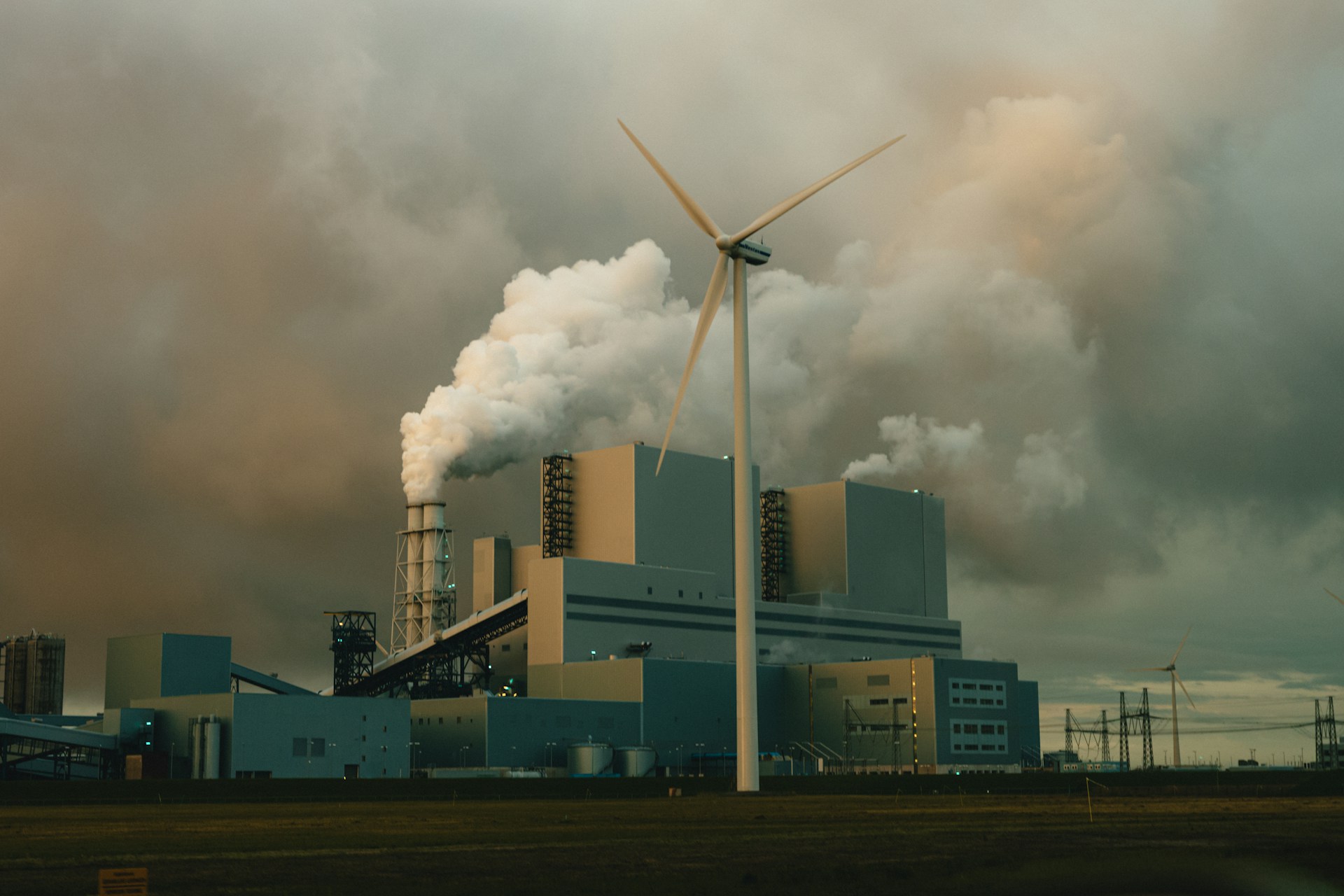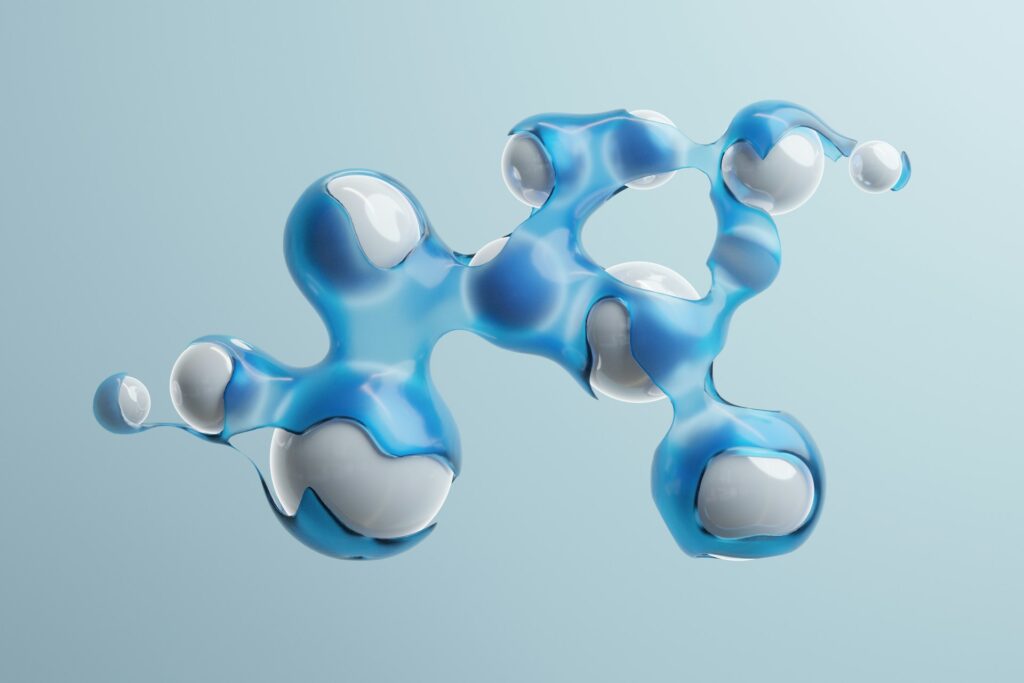Professor Hailiang Wang, a chemist in Yale’s Faculty of Arts and Sciences and a member of the Yale Energy Sciences Institute, has led a team that developed a new catalytic process capable of converting carbon dioxide into methanol more efficiently than previous designs. The method, is based on a dual-site catalyst that tackles one of the fundamental challenges in turning captured emissions into usable energy.
Li, J., Zhu, Q., Chang, A., Cheon, S., Gao, Y., Shang, B., Li, H., Rooney, C. L., Ren, L., Jiang, Z., Liang, Y., Feng, Z., Yang, S., Robert Baker, L., & Wang, H. (2025). Molecular-scale CO spillover on a dual-site electrocatalyst enhances methanol production from CO2 reduction. Nature Nanotechnology, 20(4), 515–522. https://doi.org/10.1038/s41565-025-01866-8
For decades, researchers have pursued ways to transform carbon dioxide, a greenhouse gas that accumulates in the atmosphere, into liquid fuels or chemical feedstocks. Methanol is of particular interest because it is already used widely as a fuel, a precursor in the plastics industry, and as a solvent in industrial chemistry. Converting waste carbon into methanol provides a pathway that not only reduces emissions but also creates a commodity with existing markets. Despite this promise, the challenge has always been to make the reaction efficient enough to be practical at scale.
Professor Hailiang Wang, from Yale’s Faculty of Arts and Sciences stated,
“This is a new strategy that brings CO2 reduction into methanol to a new level”.
The conversion of carbon dioxide into methanol occurs through two chemical steps. In the first step, carbon dioxide molecules are reduced to carbon monoxide. In the second, the carbon monoxide undergoes a further reaction to form methanol. In previous designs, a single catalyst was tasked with handling both steps. Professor Wang’s earlier work relied on cobalt-based molecules supported on carbon nanotubes. While this arrangement was successful in demonstrating the principle, it faced a bottleneck: conditions that improved the conversion of carbon dioxide to carbon monoxide were not ideal for converting carbon monoxide to methanol. The mismatch limited overall efficiency and prevented significant scaling.
The new study addresses this challenge with a dual-site strategy. The team placed two different catalytic sites in close proximity on carbon nanotube supports. Nickel tetramethoxyphthalocyanine was selected for the first step, where it efficiently converts carbon dioxide to carbon monoxide. The second site, cobalt tetraaminophthalocyanine, was optimized for the subsequent conversion of carbon monoxide into methanol. Because these two types of molecules specialize in different reactions, locating them near one another creates a cascade process. Once carbon monoxide is generated at the nickel site, it migrates a short distance to the cobalt site in a phenomenon known to catalysis researchers as spillover. There, the second reaction completes, producing methanol with higher selectivity and yield.
According to the team’s experimental findings, this dual-site catalyst significantly improves both the Faradaic efficiency, which measures how effectively electrons are used for the desired product, and the partial current density, which reflects how much methanol is generated at a given electrode area. In some cases, methanol efficiencies approached 50 percent, an advance over earlier single-site systems that often struggled to surpass 30 percent. The higher current density also indicates that the reaction can proceed at faster rates, a necessity for industrial application.
The collaborative nature of the project is notable. In addition to the Yale researchers, scientists from Ohio State University, Oregon State University, and the Southern University of Science and Technology contributed key insights. At Ohio State, Robert Baker’s group provided experimental confirmation of the molecular spillover mechanism. Teams from Oregon State explored performance metrics and broader implications for sustainable fuels, while collaborators in China conducted additional analysis of catalyst structures and stability. This international effort strengthens the evidence for the dual-site approach and demonstrates the growing global interest in carbon utilization technologies.
While the laboratory results are promising, significant challenges remain before such a system could be deployed at industrial scale. Electrocatalysts must be stable during long-term operation, resistant to degradation, and cost-effective to manufacture. Current tests have focused on controlled laboratory environments where purity, temperature, and pressure can be optimized. Industrial conditions, particularly those involving flue gas streams with impurities, introduce complications that have yet to be solved. Scaling up from a laboratory electrode to a full electrochemical reactor will require addressing mass transport limitations, designing electrodes with appropriate porosity, and ensuring that energy inputs remain economically viable.
Despite these challenges, the significance of the research lies in demonstrating that a carefully designed dual-site system can overcome the inefficiencies that have limited prior attempts. Instead of expecting one catalyst to handle two very different reactions, the team’s approach allows each site to perform the role for which it is best suited. By showing how molecular-scale design choices translate into system-level improvements, the study provides a blueprint for future work not only in carbon dioxide conversion but also in other multi-step electrocatalytic processes.
Beyond methanol, the concept may be extended to other fuels and chemicals. Many reactions of industrial interest involve sequences where intermediates must be formed and then further processed. Designing catalysts with multiple sites positioned to hand off those intermediates efficiently could prove broadly useful. Researchers in the field are already considering how similar strategies might be applied to the production of higher alcohols, hydrocarbons, or ammonia.
Professor Wang and his colleagues view this discovery as part of a broader strategy to reduce carbon footprints and accelerate the transition to cleaner energy. The research received support from the Yale Center for Natural Carbon Capture and the U.S. National Science Foundation, reflecting a growing commitment to technologies that do more than capture carbon dioxide—they repurpose it.
From an engineering standpoint, the path ahead involves scaling, durability testing, and economic evaluation. Engineers will need to design reactors that integrate such catalysts with carbon capture systems, balance the energy requirements of the process, and match methanol output with existing demand. Methanol’s flexibility as a fuel and chemical makes it a strong candidate for integration into global energy and manufacturing systems, provided the conversion can be made competitive with fossil-based production.
The Yale team’s work underscores a broader trend in energy research: the movement from laboratory-scale chemistry toward engineered systems that can address global sustainability challenges. The dual-site catalyst may not be the final solution, but it is a clear demonstration that fundamental chemistry can point the way toward practical technologies for managing carbon in the 21st century.

Adrian graduated with a Masters Degree (1st Class Honours) in Chemical Engineering from Chester University along with Harris. His master’s research aimed to develop a standardadised clean water oxygenation transfer procedure to test bubble diffusers that are currently used in the wastewater industry commercial market. He has also undergone placments in both US and China primarely focused within the R&D department and is an associate member of the Institute of Chemical Engineers (IChemE).



